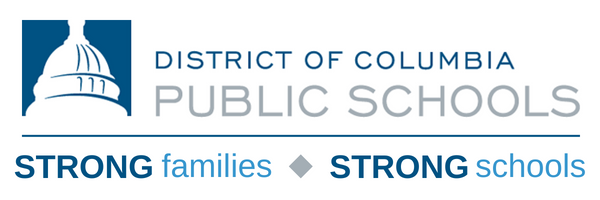Term 3 Planning
This page is now archived because it relates to information for a previous school year.
Every school’s reopening plan is unique.
Explore an overview of Term 3 learning models and find your school.
Review the Family Guide for In-Person Learning
Important documents for students returning to the classroom.
Check out your school’s reopening operational plan and building readiness checklist.
Find your school here.
In Term 3, which begins on February 1, every school will offer a range of in-person learning options and services for students. This includes In-Person Learning (IPL) Classrooms with teachers, CARE Classrooms or tutoring services with staff facilitators, and self-contained classrooms for special education students.
School reopening plans were shaped by planning and engagement with their Reopen Community Corps. They reviewed feedback from elementary and secondary learning preference surveys, led with equity to prioritize their highest need students, and helped school leaders design a tailored reopening plan for their school in Term 3.
Each school accounted for demand data in their reopening plans and, on average, will be able to serve approximately 30 percent of their students in person depending on staffing and classroom space. We look forward to welcoming up to 15,000 students in-person in Term 3, and schools will begin to notify families with seat offers beginning January 11.
Families will always have a choice to have their student remain learning at home, and there is no requirement to accept an in-person learning seat.
We commit to keeping you informed on this planning process and will update this section on a regular basis.
Term 3 reopening plans prepared by schools are now available to review at this link.
Example of Elementary In-Person Learning Models
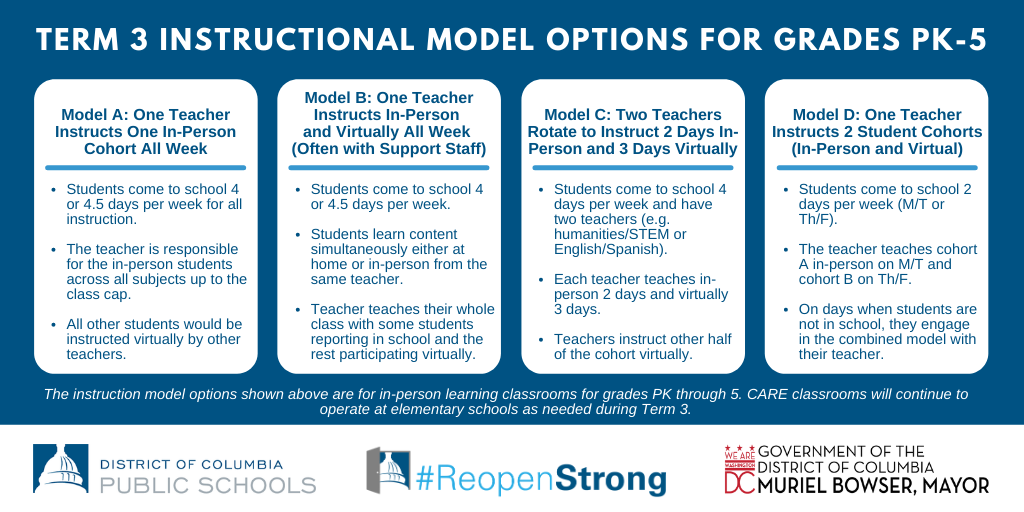
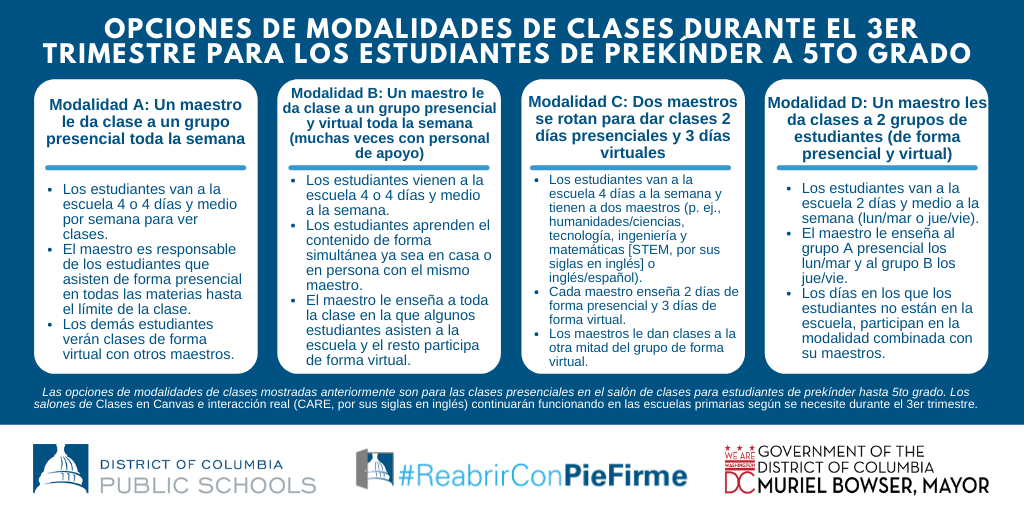
| Model A: One Teacher Instructs One Cohort All Week | Model B: One Teacher Instructs In-Person and Virtually All Week (Often with Support Staff) | Model C: Two Teachers Rotate to Instruct 2 Days In-Person and 3 Days Virtually | Model D: One Teacher Instructs 2 Cohorts of Students (In-Person and Virtual) |
|---|---|---|---|
| Students come to school 4 or 4.5 days per week for all instruction. | Students come to school 4 or 4.5 days per week. | Students come to school 4 days per week and have two teachers (e.g. humanities/STEM or English/Spanish). | Students come to school 2 days per week (M/T or Th/F). |
| The teacher is responsible for the in-person students across all subjects up to the class cap. | Students learn content simultaneously either at home or in-person from the same teacher. | Each teacher teaches in-person 2 days and virtually 2 days. | Their teacher teaches A cohort in person M/T and B cohort Th/F. |
| All other students would be instructed virtually by other teachers. | Teacher teaches their whole class with some students reporting in school and the rest participating virtually. | Teachers instruct other half of cohort virtually. | The days the students are not in school they engage in the Combined model with their teacher. |
Examples of Secondary In-Person Learning Models
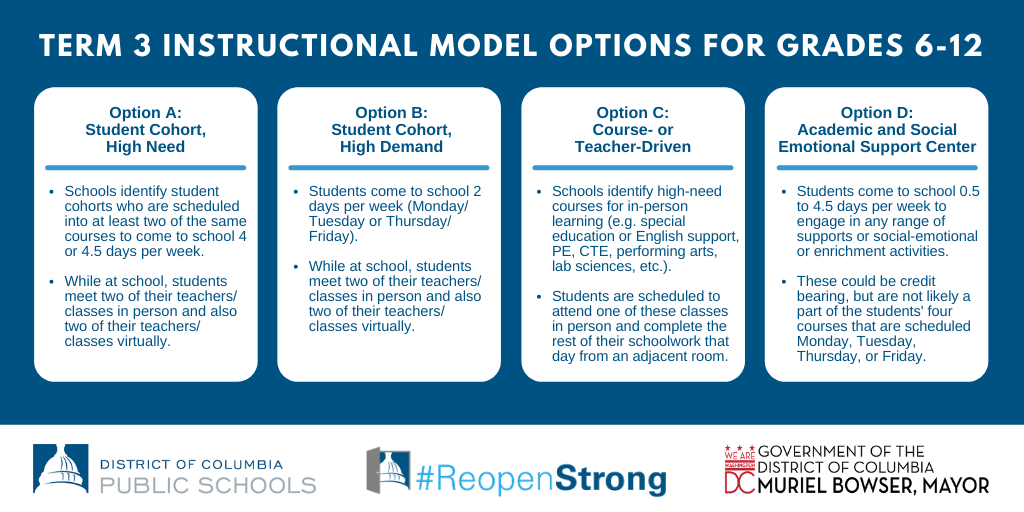

| Option A: Student Cohort, high need | Option B: Student Cohort, high demand | Option C: Course or teacher driven | Option D: Academic and Social Emotional Support Center |
|---|---|---|---|
| School identify student cohorts who are scheduled into at least two of the same courses to come to school 4 or 4.5 days per week. | Students come to school 2 days per week (Monday / Tuesday or Thursday / Friday). | Schools identify high-need courses for in-person learning (e.g. special education or English support, PE, CTE, performing arts, lab sciences, etc.). | Students come to school 0.5 to 4.5 days per week to engage in any range of supports or social-emotional or enrichment activities. |
| While at school, they meet two of their teachers/classes in person and also two of their teachers/classes virtually. | While at school, they meet two of their teachers/classes in person and also two of their teachers/classes virtually. | Students are scheduled to attend one of these classes in person and complete the rest of their schoolwork that day from an adjacent room. | These could be credit bearing, but are not likely a part of the students four courses that are scheduled Monday, Tuesday, Thursday, or Friday. |
Seat Notifications Begin January 11
Your school will share more information about reopening plans and how to accept a seat beginning the week of January 11. A family will always have the option to continue learning at home and can decline a matched seat. If you accept a seat, you may also switch to learning at home at any point by contacting your school.
Students who accept an in-person seat must have a general immunization certificate on file by the start of Term 3. If you have questions about your student’s immunizations, contact your medical provider and request a copy of your student’s immunization history or call the DC Health Immunization Program at (202) 576-7130. Additionally, there are 64 immunization clinics across the city that are ready to respond to the needs of families to complete immunizations. Find a pediatric community facility location nearest you.
Key Dates in January for Families
- January 11 – Schools begin sending in-person seat offers
- January 13 at 5:00 p.m. – Term 3 Community Town Hall
- January 18 – Martin Luther King, Jr. Day (DCPS closed)
- January 19 – No school for students and teachers
- January 20 – Inauguration Day (DCPS closed)
- January 25 – Term 3 schedules available in Aspen
- January 27 at 5:00 p.m. – Term 3 Community Town Hall
- January 28 – Last day of Term 2; Your school will share if there will be asynchronous learning due to teacher PD
- January 29 – No school for students; Records day for staff and teacher PD
A Safe and Healthy Return to In-Person Learning
The safety of students and staff is paramount and all DCPS health and safety protocols are adhered to in schools’ reopening plans. In-person learning programs and services are limited to small group cohorts and follow DC Health guidelines. Daily PPE supplies, socially distanced classroom arrangements, and enhanced cleaning regimes are in place.
Schools will continue to provide rapid COVID-19 testing for students posing potential symptoms while at school, as well as regular testing of asymptomatic students and the provision of at-home testing kits for in-person staff to help schools remain safe for in-person learning. The COVID-19 vaccination process for the DCPS workforce is expected to start before Term 3.
Reopen Community Corps
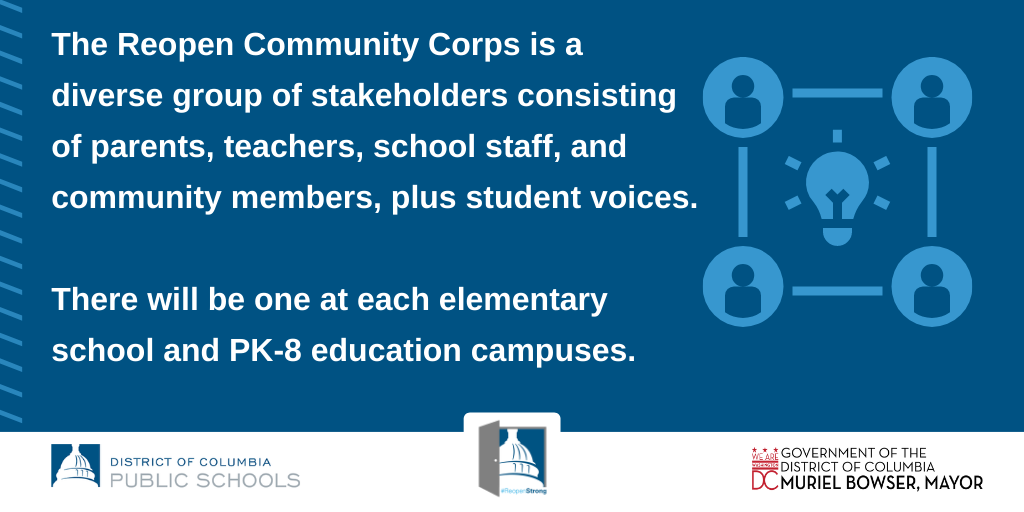
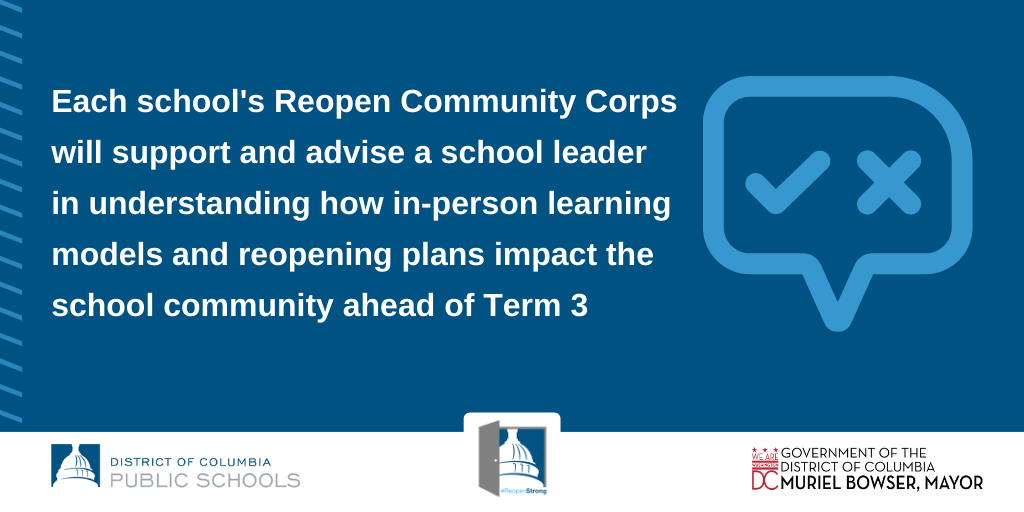

We know individual school communities are best positioned to respond to the needs of their unique school communities and, most importantly, students furthest from opportunity.
The Reopen Community Corps is a diverse group of school-level stakeholders consisting of parents, teachers, school staff, community members, and/or students. Convened at every elementary school, they will support and advise a school leader in understanding learning models and impacts on the community for reopening strong for In-Person Learning and CARE classrooms in Term 3.
Learn more about the Reopen Community Corps.
PAGE ARCHIVED: August 11, 2021.
